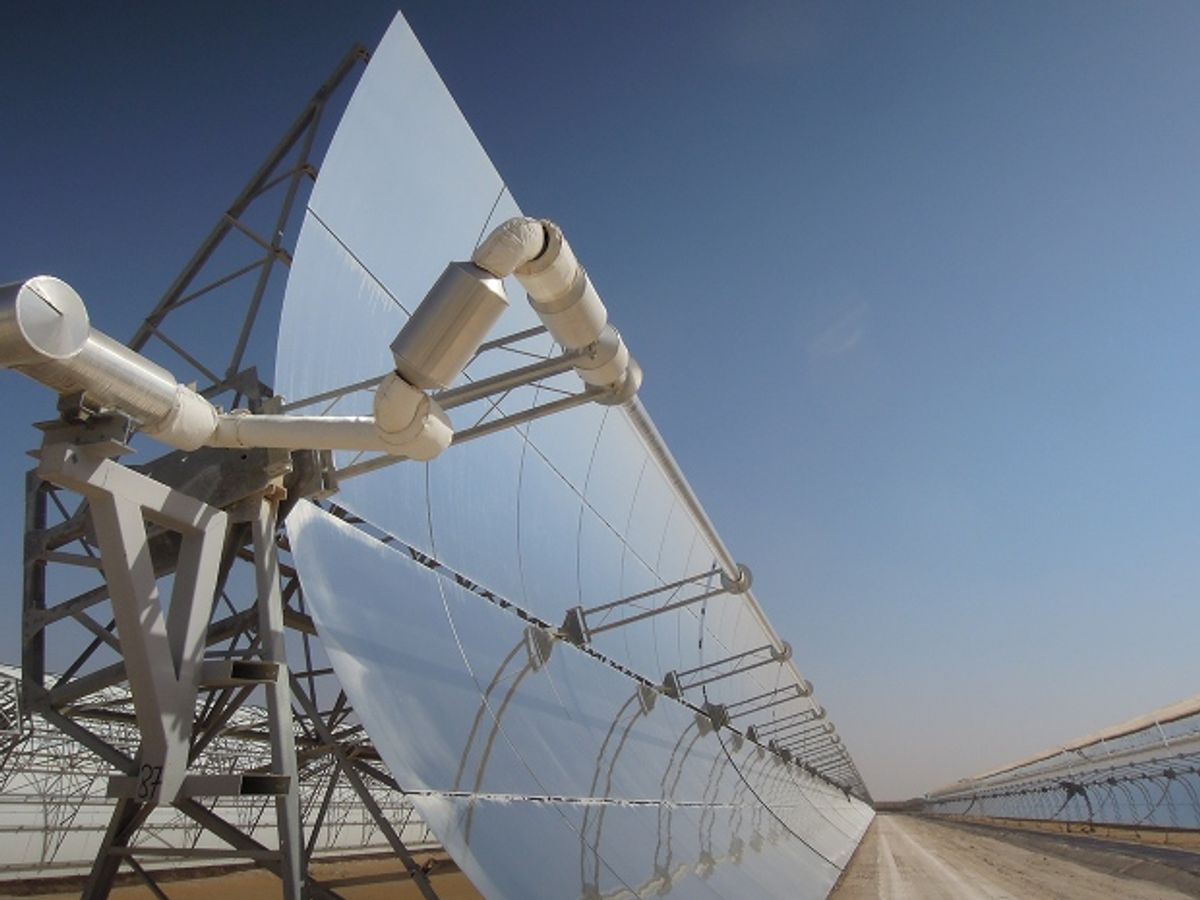A solar plant "inauguration" is an inherently undramatic event. Steam does not begin to rise from a cooling tower, water does not flow through the bottom of a dam, a majestic turbine does not begin to spin. The sun, shining down on the desert, doesn't much care that some of its photons are now being used to generate electricity in one of the most oil-rich nations on earth.
That lack of built-in drama, though, certainly didn't stop the United Arab Emirates from trying. The inauguration of Shams 1—a 100-megawatt concentrated solar power plant about two hours outside of the city of Abu Dhabi in the desert of the Western Region—featured a poet, the national anthem played by a 30-piece (or so) band, and was attended by some impressively important Emiratis: the President of the UAE, Sheikh Khalifa bin Zayed Al Nahyan (who doubles as the ruler of the Emirate of Abu Dhabi), along with the vice president (who doubles as the prime minister) and the crown prince (who doubles as deputy supreme commander of the country's army).
Shams 1 is undeniably an impressive facility. Located in the desert near the town of Madinat Zayed, it felt like a microcosm of the UAE's wealth and recent growth; the parking lot prior to the inauguration filled up with white Land Rovers and black Mercedes, one after another, and the site's helipad was actually FOUR helipads for those high-helicopter-traffic days. The CEO of Masdar, Dr. Sultan Ahmed Al Jaber, called the plant a "beacon lighting the way" toward huge renewable energy growth in the UAE and in the Middle East-North Africa region.
Those words might have been a bit loftier than the ocassion called for—there is certainly big interest in solar power in the region, but there aren't any particular signs that explosive growth is right over the horizon. Still, progress: the CIA Factbook entry for the United Arab Emirates, based on 2009 data, will certainly need to be revised—it says 100 percent of UAE power comes from fossil fuels. But some things are unlikely to change much thanks to these particular 100 megawatts: It also says the country produces more than 3 million barrels of oil per day, good for eighth place in the world, 2 million of which it exports (putting it in seventh place in that category). It drops to 27th in carbon dioxide emissions from energy consumption, but that's in the 115th largest country by population in the world. Dramatic numbers, for such a drama-free event.
Photos: Dave Levitan. Top and bottom: views of Shams 1 plant. Middle: Representatives of Total, Masdar, and Abengoa Solar at the inauguration.
Disclosure: Masdar paid Mr. Levitan's airfare and other expenses related to the inauguration.
Dave Levitan is the science writer for FactCheck.org, where he investigates the false and misleading claims about science that U.S. politicians occasionally make.





